Destroy All Symbols
Athens Street Art
Coming down from the Acropolis a certain side of Athens opened itself up to me when I practically walked into this piece. Like nothing I ever saw before. Body of glued textiles and mouths of cut out prints. On top of layers upon layers of tags.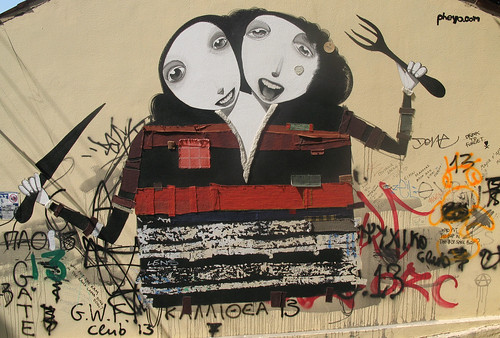
by Pheyo
I hadn't noticed anything walking up. Possibly also to do with the waves of salty sweat washing down my forehead into my eyes. But when my eyes had been opened the pieces were everywhere. Lots of different styles.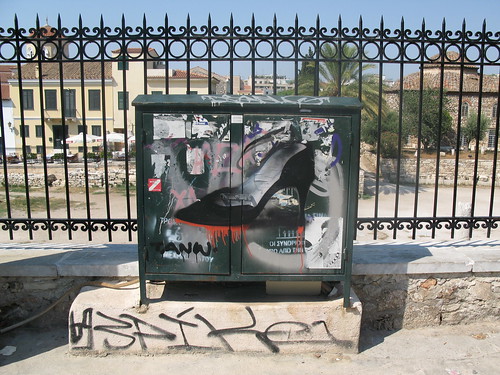
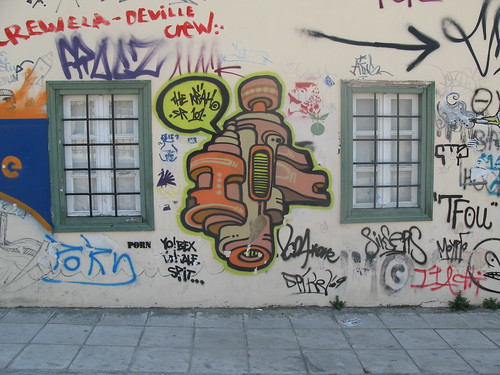
Tags all over. In thick layers. Making me wonder if the strong street art scene of Athens might be a product of the municipal authorities relaxed attitude towards keeping everything neat and tidy.
I love how street art turns the walls of the city into a media for site specific mass communication. Though most often rather abstract mass communication. In contrast to the definite and predictable messages of advertisement. And then we are closing in on the core of what makes this stuff both fantastic and important.
Ostranenie
Ostranenie - a term I've touched on one or two earlier occasions, translates into defamiliarization. It was coined by the Russian formalist writer and critic Viktor Shklovsky who views this mechanism as the trues essence of all art.
This is what he writes in his essay/manifesto Art as Technique - here conveniently highlighted for efficient blog-reading:
# 13. If we start to examine the general laws of perception, we see that as perception becomes habitual, it becomes automatic. Thus, for example, all of our habits retreat into the area of the unconsciously automatic; if one remembers the sensations of holding a pen or of speaking in a foreign language for the first time and compares that with his feeling at performing the action for the ten thousandth time, he will agree with us. Such habituation explains the principles by which, in ordinary speech, we leave phrases unfinished and words half expressed. In this process, ideally realized in algebra, things are replaced by symbols. Complex words are not expressed in rapid speech; their initial sounds are barely perceived. Alexander Pogodin [in a 1913 work] offers the example of a boy considering the sentence "The Swiss mountains are beautiful" in the form of a series of letters: T, S, m, a, b.
# 14. This characteristic of thought not only suggests the method of algebra, but even prompts the choice of symbols (letters, especially initial letters). By this 'algebraic' method of thought we apprehend objects only as shapes with imprecise extensions; we do not see them in their entirety but rather recognize them by their main characteristics. We see the object as though it were enveloped in a sack. We know what it is by its configuration, but we see only its silhouette. The object, perceived thus in the manner of prose perception, fades and does not leave even a first impression; ultimately even the essence of what it was is forgotten. Such perception explains why we fail to hear the prose word in its entirety (see Leo Jakubinsky's article) and, hence, why (along with other slips of the tongue) we fail to pronounce it. The process of 'algebrization,' the over-automatization of an object, permits the greatest economy of perceptive effort. Either objects are assigned only one proper feature - a number, for example - or else they function as though by formula and do not even appear in cognition.
And then you get the next part full length...
I was cleaning a room and, meandering about, approached the divan and couldn't remember whether or not I had dusted it. Since these movements are habitual and unconscious, I could not remember and felt that it was impossible to remember - so that if I had dusted it and forgot - that is, had acted unconsciously, then it was the same as if I had not. If some conscious person had been watching, then the fact could be established. If, however, no one was looking, or looking on unconsciously, if the whole complex lives of many people go on unconsciously, then such lives are as if they had never been. [Leo Tolstoy's Diary, 1897]
# 15. And so life is reckoned as nothing. Habitualization devours works, clothes, furniture, one's wife, and the fear of war. "If the whole complex lives of many people go on unconsciously, then such lives are as if they had never been." And art exists that one may recover the sensation of life; it exists to make one feel things, to make the stone stony. The purpose of art is to impart the sensation of things as they are perceived and not as they are known. The technique of art is to make objects 'unfamiliar,' to make forms difficult, to increase the difficulty and length of perception because the process of perception is an aesthetic end in itself and must be prolonged. Art is a way of experiencing the artfulness of an object: the object is not important. [This key statement has been translated different ways; Robert Scholes, for instance, renders it as: In art, it is our experience of the process of construction that counts, not the finished product.] (from "Art as Technique" - click for full text)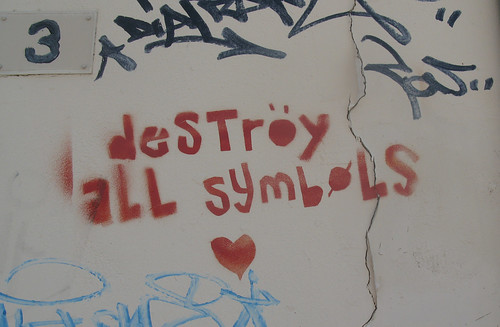
After rereading Shklovkys text the above statement suddenly made sense. How you can destroy symbols with symbols.
One street artist who really take this effect of ostranenie to the sublime is Banksy, so in his concise words:
If you want someone to be ignored then build a lifesize bronze statue of them and stick it in the middle of town.
It doesn't matter how great you were, it'll always take an unfunny drunk with climbing skills to make people notice you. ("Wall and Piece", p. 208)
It draws us out of the white noize of our everyday routine and draws our attention not only to itself - but also to the space around it. And our bodys place in relation to that. Allows us to locate ourself both geographically and mentally in the urban space.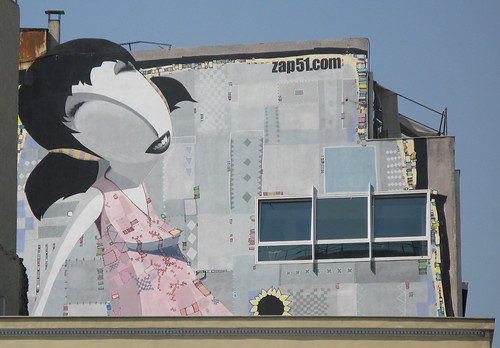
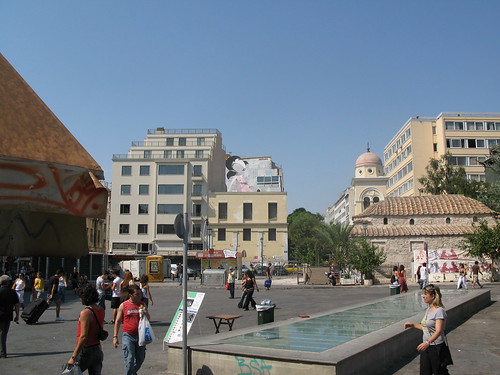
Wheeew - that was a rather long and rather messy one... a beer to anyone who followed me this far.

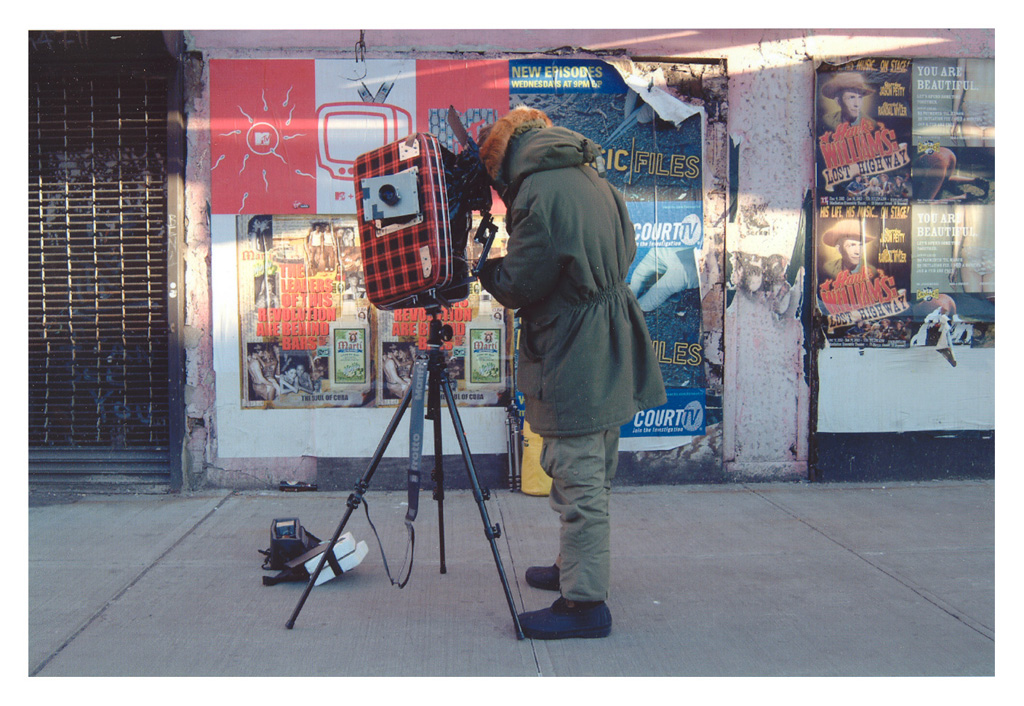



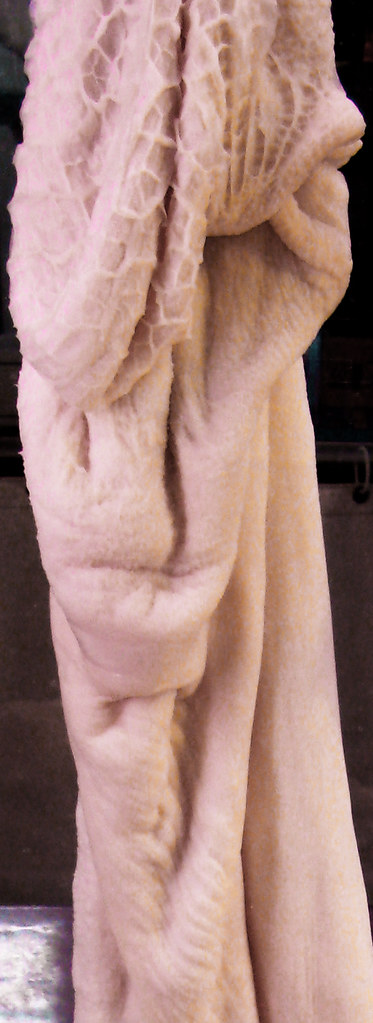


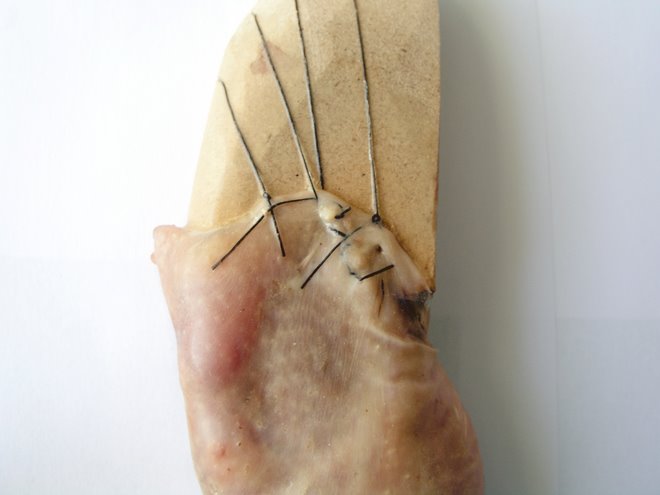
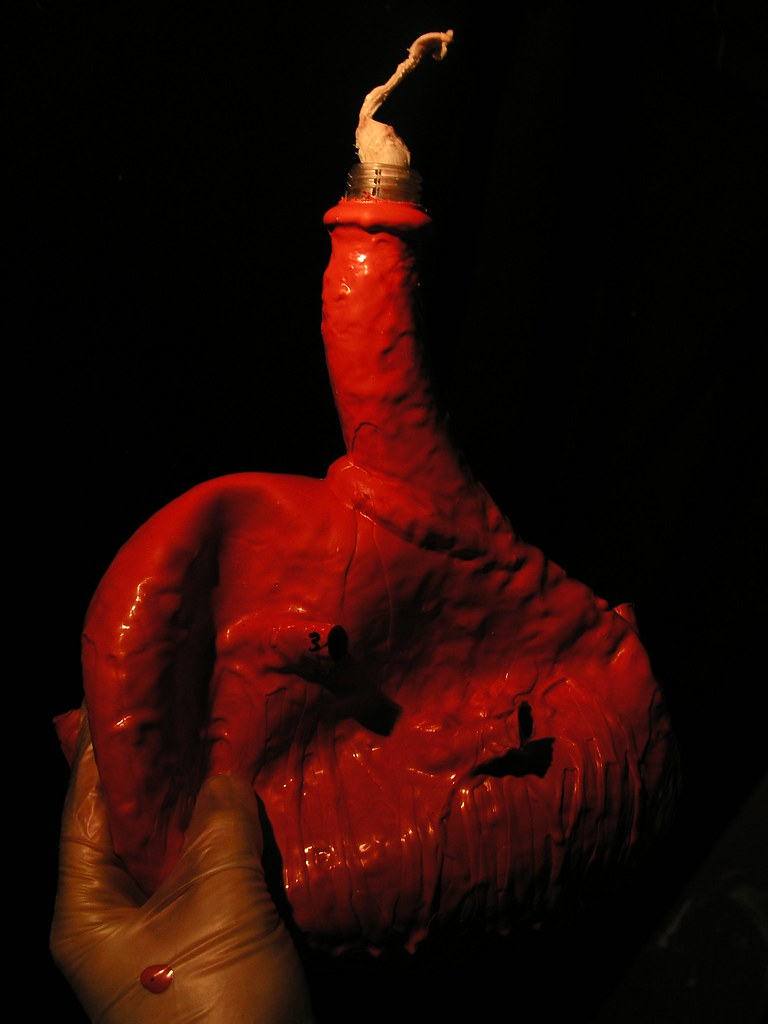
No comments:
Post a Comment